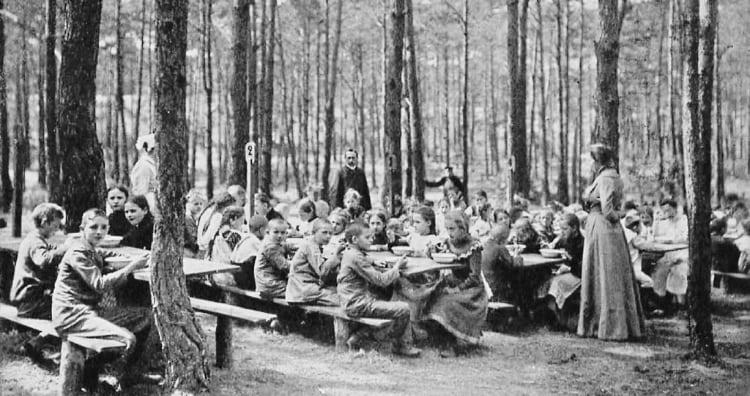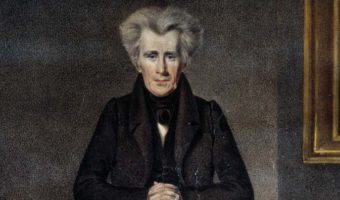What Were Open-Air Schools? Can They Be Re-introduced?
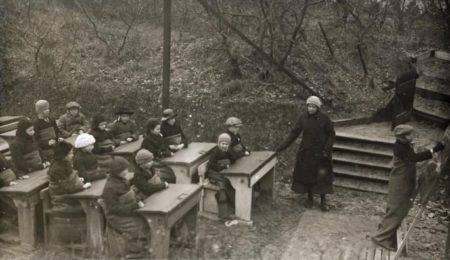
This old black-and-white photo pops up from time to time in cyberspace, summarizing my opinions on what my education should be like. The interesting idea of an open-air school was very common in the 20th century in the Netherlands, where the photo was taken. If the weather permits it, the idea of an outdoor classroom should be extremely obvious, but sadly, most traditional schools today don’t place much focus on the advantages of learning from an al fresco classroom.
Table of Contents
History of Open-Air Schools and Their Advantages
In 1904, the open-air school movement first started in Berlin, Germany, and the school authorities came up with an innovative idea of a “Forest School” that was a huge success. To improve the health and intelligence of German children with many diseases and tuberculosis, numerous ailing and tubercular German children were sent daily to an outdoor school with a curriculum of relaxation, play, and study. They were also given three substantial meals a day in an effort to enhance their health and intelligence. After three months, these children were completely cured and returned to regular school. News of this highly successful experiment expanded quickly across Europe and other countries, and “fresh air†schools or the “open-air” school model was born.
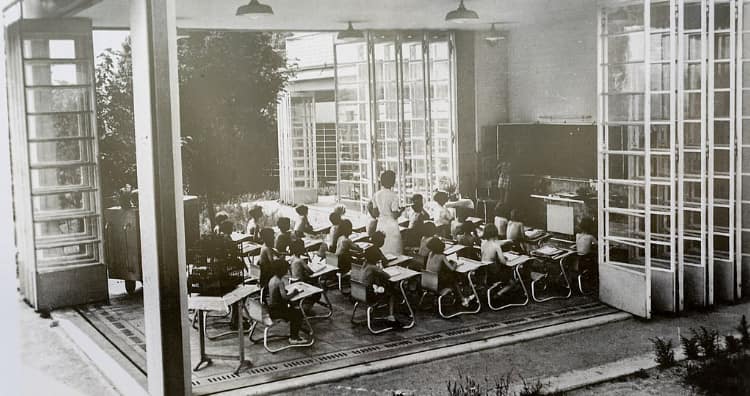
In 1905, when tuberculosis swept the United States, and Americans lived in deadly fear of TB, it alarmed the authorities. S. Adolphus Knopf pointed out that American classroom windows only open halfway and should soon be replaced with French windows in order to “…enable twice as much foul air to go out and of clean air to get in.” The National Tuberculosis Association, which later evolved into the American Lung Association, was founded by S. Adolphus Knopf, a German-born tuberculosis specialist. By 1915, Knopf argued that “Outdoor schools and as much outdoor education as possible should be the norm in kindergartens, schools, and universities.”
Chronology of the Movement and Benefit of Fresh Air Schools
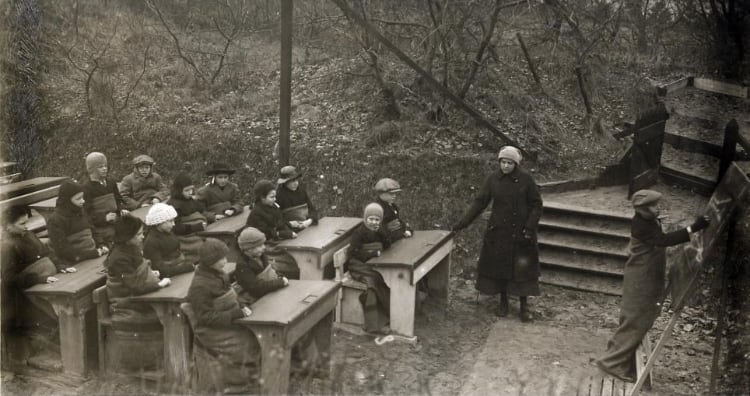
Earth and sky, woods and fields, lakes and rivers, the mountain and the sea, are excellent schoolmasters, and teach us more than we can ever learn from books.†– John Lubbock
In the early 20th century, field schools became widespread in Northern Europe, originally intended to prevent and combat the spread of tuberculosis in the pre-World War II era. Schools were constructed with the idea that exposure to the outdoors, excellent ventilation, and fresh air were essential. The concept gained traction fast, and an open-air school movement was also established for healthy kids, encouraging all pupils to spend as much time outside as possible.
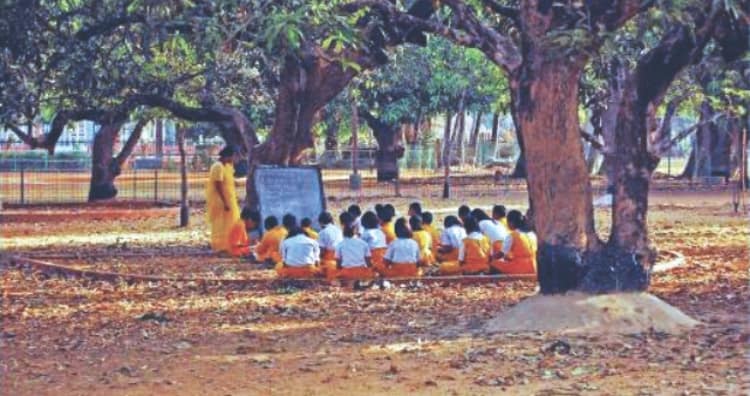
In 1901, Rabindranath Tagore’s experimental school in Shantiniketan called the “Brahmacharya Ashram,” was also based on the philosophy of learning in a natural environment. This exceptional institution fostered some of the most imaginative minds in the nation and helped education extend beyond the four walls of the classroom.
In Britain, there were 96 open-air day schools in operation by 1937. America was ready to adopt them as well and opened its first open-air school in Providence, Rhode Island, as early as 1908. They were so convinced about its efficacy in educating that the movement became organized in 1922 when the first International Congress took place in Paris at the initiative of The League for Open Air Education.
The purpose of an open-air school is to provide its kids with as much exposure to the sunshine as possible. Classes were held in the open space and nearby forests because it was thought that doing so would help urban kids develop their independence and self-worth. Open-air teaching and pedagogy have many other advantages. For example, it generates a more active imagination, improves attitudes to learning and mental well-being, and increases focus on tasks. “Enable a pleasant assembly, somewhat resembling classroom structure, devoid of fear, focusing on play, activities, and interactive dialogue,” is the idea behind the program.
Up to the 1970s, the distinctive educational approach was widely used. After World War II, open-air schools became less and less necessary as a result of the development of antibiotics and the improvement of domestic social conditions, and they were eventually phased out.
Challenges in Conducting Sessions in Outdoor Classrooms
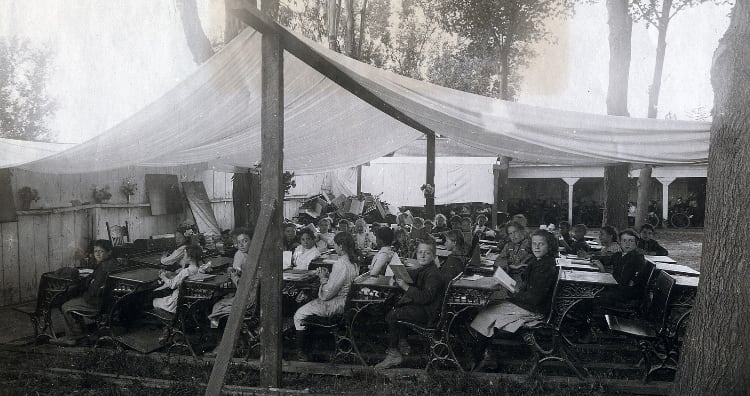
Many experts think that holding open-air classrooms for students as a precaution against contagious diseases is easier on paper than in practice as they face a shortage of open, outdoor space.
Outdoor classrooms are undoubtedly an innovative concept, but there are practical problems in their implementation. Especially in urban areas, it is difficult to find open spaces, and even if you do find them, it is difficult to attract students in place of school buildings. Parents are wary of sending their children to playgrounds where their safety may be compromised, as it is impossible to keep track of every child.
Safety regulations, natural hazards such as bees, uneven ground, and weather-related concerns like rain, snow, hot climates, etc., are some of the major hurdles in conducting classes outside the four walls.
For example, it is not practical for kids to spend the entire day outside in the Sun. In open spaces, board work is a major issue as well, and teachers are struggling to teach subjects like mathematics when the lecture method is ineffective. Due to a lack of available space and other related issues, we still have a way to go before we can replicate this concept.
A Balance Is Needed Between Traditional Schools and Outdoor Classrooms

Despite many challenges associated with open-air schools, we cannot ignore this innovative concept because one of the most significant events in a child’s life should be teaching them about the natural world. Nature fosters curiosity and encourages the development of explorers rather than robots. It reminds us that we are part of something bigger.
The best of both worlds would undoubtedly be found in those hybrid classrooms with folding walls. While receiving the benefits of fresh air, you are still shielded from rain and harsh sunlight. And if it is too cold in the winter, you may choose to close the walls and have a regular classroom.
Based on the Dutch school concept, many governments have decided to develop eco-friendly schools in which structural and other changes have been implemented to teach environmental safety by example. Moving forward, in these schools, initiatives like solar energy, composting, water harvesting, and garbage recycling will be set up.
Outdoor classrooms are one of many improved health and safety protocols educational institutions have implemented to reduce the risk of spreading COVID-19. This includes improved Wi-Fi to facilitate the use of outdoor study and gathering spaces.
Education institutions can also opt for open-air classrooms for a day or two on a weekly basis based on weather or for two to three hours in a day for some specific subjects. An open-air school or “green school” implies changing the way of life of these youngsters, who will be building the next generation, rather than just teaching about the value of the environment and hosting occasional events.
350+ Random Fun Facts For Curious Minds














